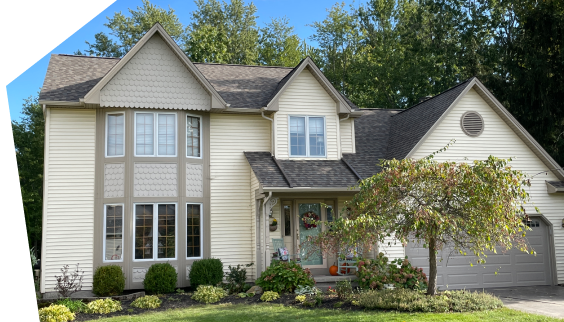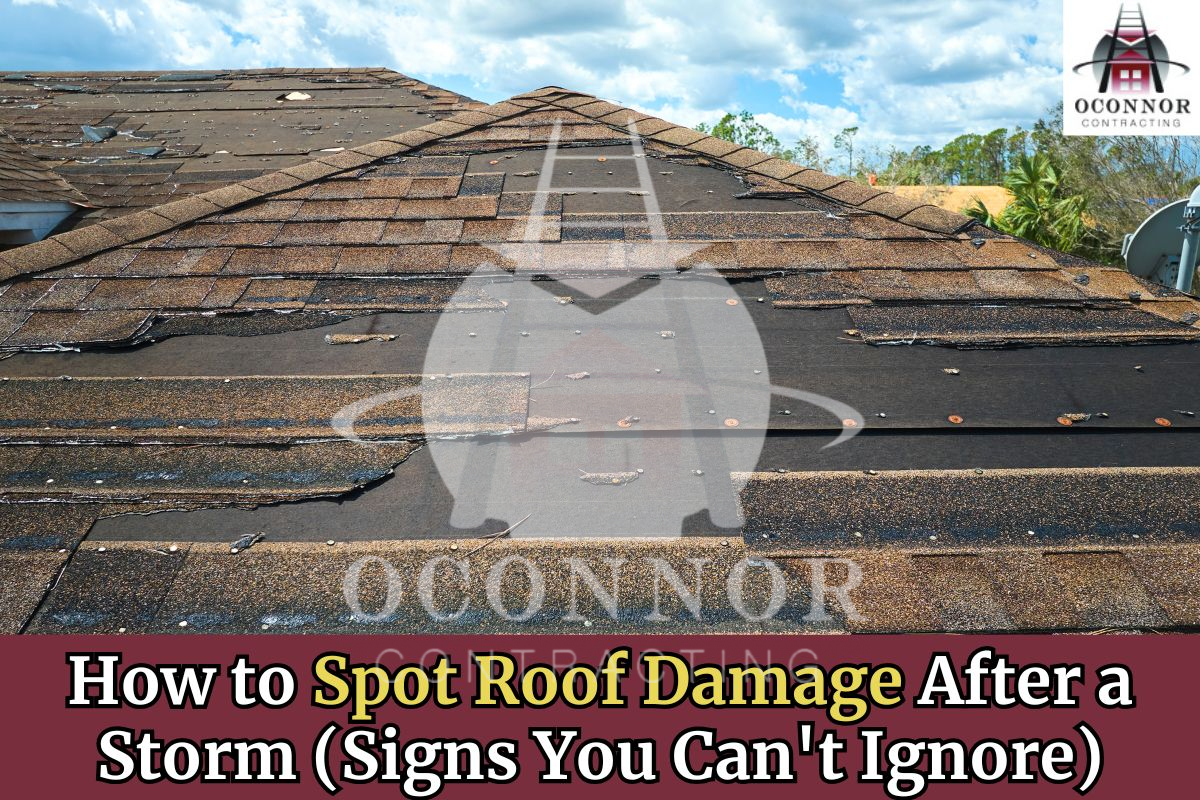When the skies clear after a strong storm, it’s natural to feel a sense of relief. However, it’s important to keep in mind that severe weather can leave lasting effects on your home, particularly on your roof. As the first barrier against the elements, your roof takes the hardest hits during a storm.
That’s what makes it so important to spot roof storm damage as soon as possible. It can help you avoid expensive repairs down the road and ensure your home remains safe. In this blog post, we’ll highlight the key signs of roof damage that you shouldn’t overlook.
Common Signs of Roof Damage After A Storm
If your home has been struck by a storm, it is important that you know how to check for roof damage. By being able to identify issues with your roof, you’ll be able to make the best decisions for your home in order to protect it during this vulnerable time.
Exterior Signs of Roof Storm Damage
#1. Dents on Gutters and Downspouts
If you see dents along your gutter channels, it might mean hail has hit your roof too. When hail is strong enough to dent your gutters, it could also cause roof storm damage.
#2. Loose Asphalt Granules
Asphalt granules protect your shingles from sun damage, but easily fall off as the shingles age. If you find loose granules in your gutters or on the ground, it could mean some of your shingles have lost this protective coating after a storm, making your roof more vulnerable.
#3. Missing or Damaged Shingles
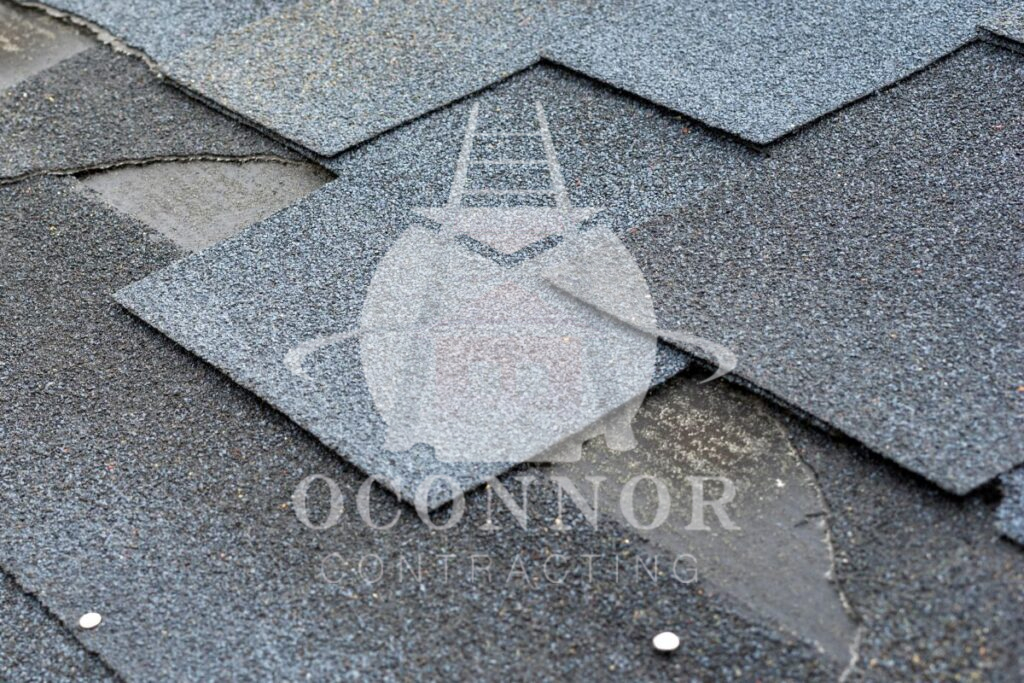
Strong winds can easily lift or tear off shingles, leaving your roof exposed to leaks. Check for any missing shingles or visible damage. If you see gaps or find shingles on the ground, it’s important to act fast to prevent more water damage and further storm damage to the roof.
#4. Dents in Roof Vents and Flashing
Hail can also cause dents in metal parts like roof vents and flashing. These dents may not be obvious but can lead to leaks if they’re not fixed. Make sure to inspect these areas closely to keep your roof watertight and prevent water damage from occurring.
#5. Cracked or Split Shingles
Shingles can crack or split during severe weather events such as high winds and hail. These cracks let water into the roof, which can cause leaks and more roof storm damage. Inspect your roof closely for any cracks, especially in older shingles.
#6. Curling or Buckling Shingles
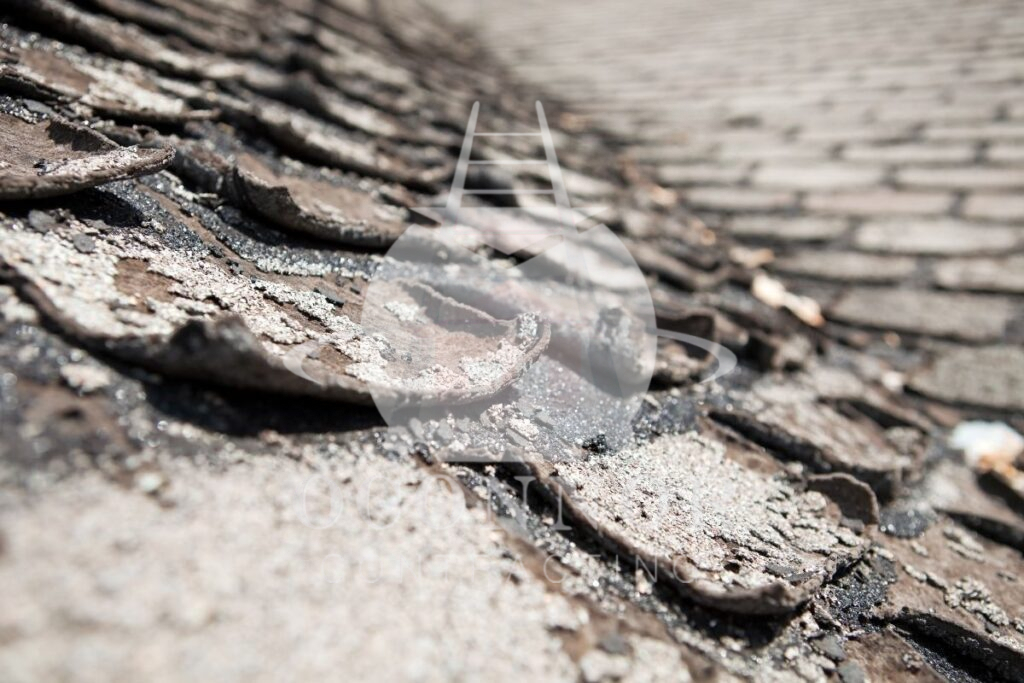
Curling or buckling shingles indicate shingles that are lifting up around the edges or pushed up, exposing the layers underneath to moisture. This increases the chance of leaks and damage.
#7. Exposed Nail Heads
If nail heads are sticking up, they can allow water to seep through, compromising your roof. This often happens when strong winds lift the shingles, pulling the nails out over time. Inspect your roof for any exposed nails, which should be resealed or replaced quickly to prevent further damage from occurring.
Interior Signs of Roof Storm Damage
#1. Water Stains on Ceilings and Walls
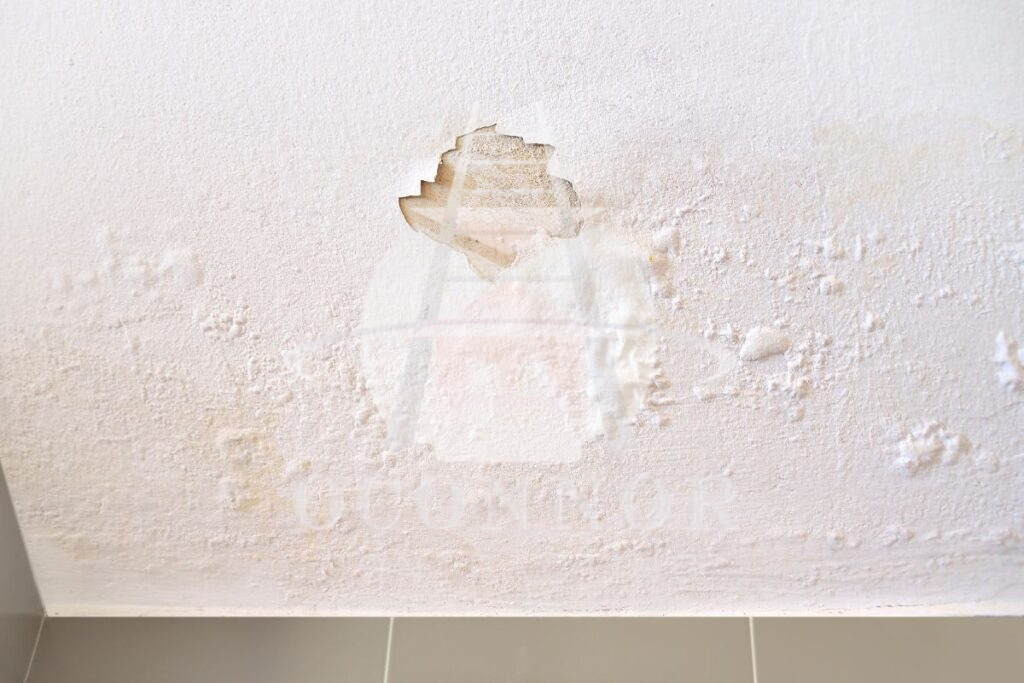
Water stains are often the first signs of a leak from roof damage. These stains show that water is getting inside your home, which can lead to mold if it’s not fixed quickly. Check your ceilings and walls for any visible patches of discoloration after storms, as this is a large indicator that you’re facing storm damage.
#2. Sagging Ceilings
A sagging ceiling is a serious sign of water buildup from a roof leak. This means that water has soaked into the ceiling materials, and could lead to a collapse if not addressed. Investigate any sagging areas right away to prevent further storm damage on the roof.
#3. Dripping or Leaking Water
If you see water dripping from your ceiling, it’s a clear sign of a significant leak that needs urgent attention. Even small leaks can cause big damage over time, so act quickly when you notice dripping water, as this may be related to roof hail damage.
#4. Rotten Wood in the Attic
Rotten wood is a sign of long-term moisture exposure from a leak. After a storm, check the rafters and other wooden structures in your attic for decay, which could be a result of hail damage. Fixing this quickly is vital to prevent more structural damage.
#5. Wet Insulation
Wet insulation means water has gotten through the roof and soaked down to the insulation. This not only makes your home less energy-efficient but also leads to mold growth. After storms, regularly check your insulation for dampness to prevent issues related to roof damage.
Also Read: Roof Blistering vs. Hail Damage: How to Tell the Difference
Steps to Take After Identifying Roof Damage
If you’ve determined that your roof has some level of roof storm damage, then it is important that you take the next steps properly:
1. Assess the Damage and Take Photos
Inspect your roof for missing shingles or damaged gutters. Capture clear photos to document the damage for insurance and contractors.
2. Contact a Roofing Contractor
Get a local contractor to inspect the roof. They’ll guide you on whether to file a claim and ensure all necessary repairs are done correctly.
3. Call Your Insurance Company
Inform your insurance provider and share the photos and any receipts for urgent repairs. Be sure to understand what your policy covers.
4. Get Repairs Done Quickly
Act fast to prevent further damage or mold. A reliable contractor can make sure repairs are completed efficiently and protect your home from future issues.
How To Protect Your Roof From Future Storm Damage
Keep your roof safe from storms by following these simple tips:
1. Schedule Regular Maintenance
Get your roof inspected annually and after harsh storms to catch minor issues early, preventing storm damage.
2. Keep Gutters Clean
Clean your gutters to avoid water buildup, which can lead to leaks and roof damage from storms.
3. Trim Trees and Clean the Yard
Trim branches and clear debris from your yard to prevent them from causing damage during a storm.
4. Install Hurricane Straps
Hurricane straps provide extra support, helping your roof withstand strong winds and reduce the risk of damage from storms.
5. Check for Loose Shingles
Regularly check for loose or missing shingles to avoid further damage from high winds or hail damage.
Does Insurance Cover Storm Damage To A Roof?
In New York, homeowners insurance generally covers storm damage to roofs, depending on the cause. Typical coverage includes wind, hail, and falling objects, as long as these aren’t excluded from your policy. If a storm damages your roof, your dwelling coverage may help pay for repairs after your deductible. Be sure to check your policy for any exclusions related to windstorms or hail damage.
Trust OConnor Contracting for Roof Storm Damage Repairs!
After a storm, it’s important to check your roof for damage. By staying alert and looking for signs like the ones we mentioned above, you can help prevent more issues from occurring. If you see anything concerning, don’t hesitate to reach out to a professional for help.
Don’t let storm damage leave you worried! OConnor Contracting is here to be your trusted partner for expert storm damage roof repair and restoration in Western New York. Our skilled team specializes in identifying and fixing storm-related roof problems. Contact OConnor Contracting today at (716) 600-7663 for an instant quote, and let us take the burden off your shoulders (and your roof!).
